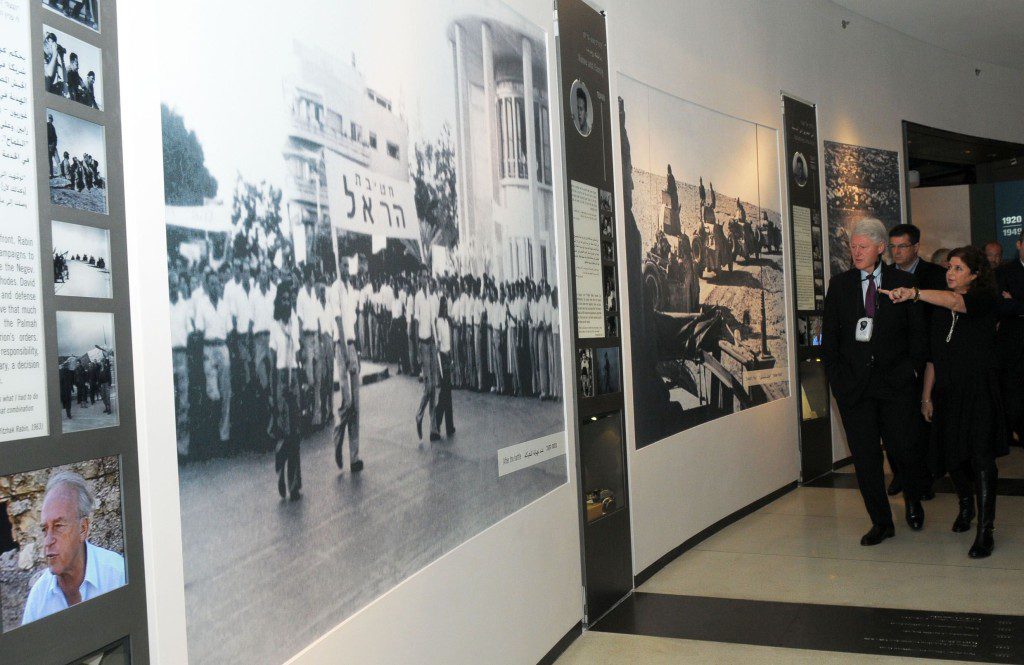The Israeli Museum at the Yitzhak Rabin Center
December 8th 2014
 The story of the State of Israel’s development is told thoroughly and compellingly at The Israeli Museum at the Yitzhak Rabin Center. As befits the Rabin Center, the museum also weaves the biography of Yitzchak Rabin himself into the history of the State of Israel.
The story of the State of Israel’s development is told thoroughly and compellingly at The Israeli Museum at the Yitzhak Rabin Center. As befits the Rabin Center, the museum also weaves the biography of Yitzchak Rabin himself into the history of the State of Israel.
The museum, built in the form of a downward spiral, opens with a recreation of what is now called Rabin Square the night Prime Minister Yitzchak Rabin was assassinated. There, you’ll screen a short film and, from the square, you’ll walk down the spiral corridor, back in time, to the beginning of the slain peacemaking leader’s life.
“The Road to Independence: 1920 to 1948” exhibit reveals the early growth of Tel Aviv, “The White City,” highlighting the roles of the Palmach, the attempts at clandestine immigration, the struggle against British rule in pre-state Palestine and other important events of this time period.
“The Building of the State: 1949 to 1967” covers the logistical and emotional difficulties of resettling massive numbers of Zionist immigrants from Arab countries over a short period of time. The rapid growth of the young country’s infrastructure is illustrated, while popular songs, plays, music and poetry open a window into the many cultural trends that permeated throughout Israel during these years.
“The Six Day War” exhibit illuminates the drama and the cost of the war, as well as the emotional reaction to the reclaiming and reuniting of Jerusalem after 2,000 years, a milestone reached thanks to the tactical brilliance of Rabin’s military leadership.
“Victory and Attrition: 1967 to 1977” covers details of the War of Attrition between Israel and Egypt, the Yom Kippur War of 1973, the dramatic raid on Entebbe and the transition from Golda Meir to Yitzchak Rabin as Prime Minister of Israel.
Employing the museum’s holdings of over 180 documentaries, 1,500 photographs and hundreds of additional items of historical interest, five more exhibits similarly document the highlights and lowlights of the State of Israel and Yitzchak Rabin’s connection to each, ending with the day after his assassination in 1995.
The museum recommends allowing up to two hours for a visit. Audio devices with explanations in Hebrew, English and Arabic allow visitors to tour the museum at their own pace. Guided tours in Hebrew and English are also available and highly recommended for families and groups.











